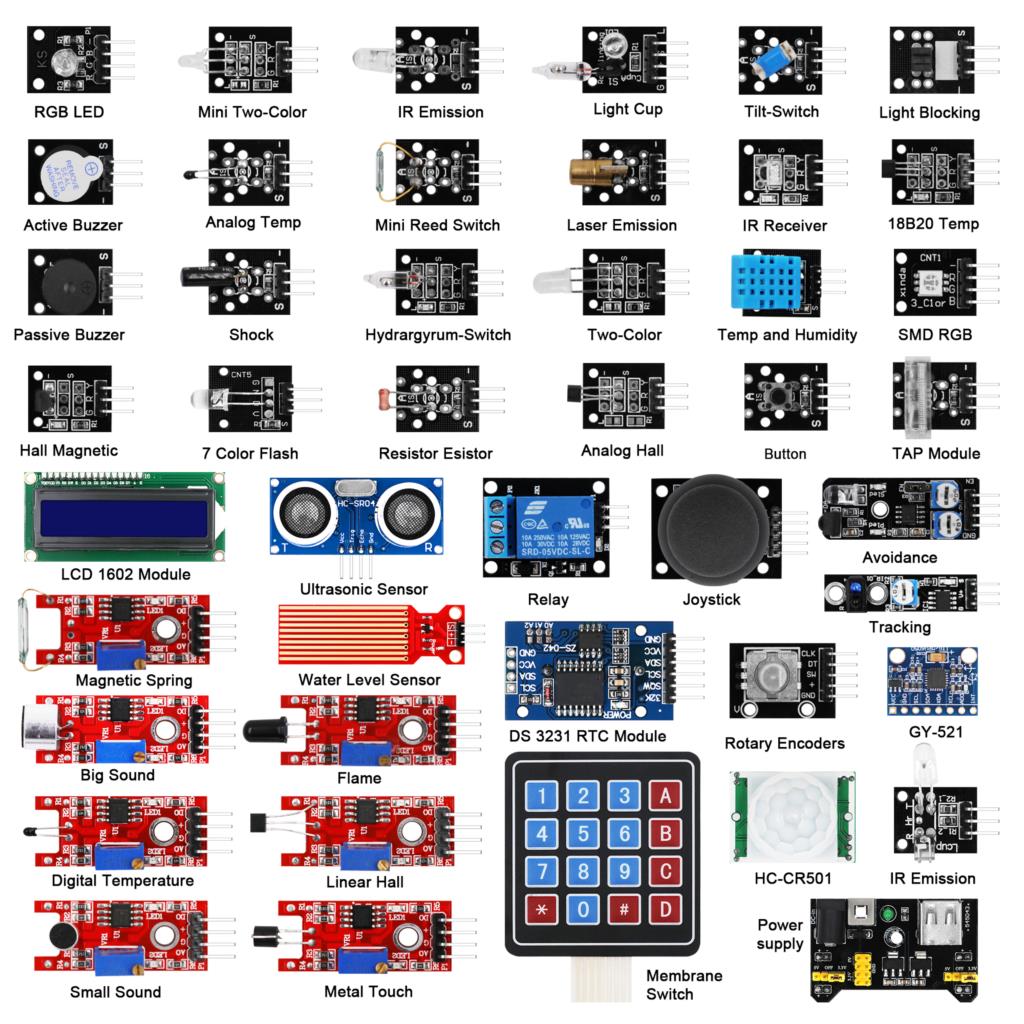Exploring Sensor Modules for Arduino Projects: A Comprehensive Guide
Introduction: Sensor modules play a crucial role in enhancing the capabilities of Arduino projects by enabling them to interact with the physical world. Whether you’re a beginner or an experienced maker, understanding the various sensor modules available and how to integrate them into your projects can greatly expand your creative possibilities. In this guide, we will dive into the world of sensor modules for Arduino, discussing their types, applications, and how to optimize their usage for better search engine visibility.
Types of Sensor Modules for Arduino:
- Temperature and Humidity Sensors: These sensors, like the DHT11 and DHT22, allow you to measure the environmental conditions of your surroundings. They are ideal for applications such as weather stations, indoor climate control, and plant monitoring.
- Ultrasonic Distance Sensors: HC-SR04 and similar sensors use sound waves to measure distance. They find applications in robotics, automatic door openers, and object detection systems.
- Motion Sensors: PIR (Passive Infrared) sensors detect human movement by sensing changes in infrared radiation. They are used in security systems, automatic lighting, and interactive installations.
- Gas Sensors: MQ series sensors detect various gases such as carbon monoxide, methane, and alcohol vapor. They are vital components in safety systems like smoke detectors and air quality monitors.
- Light Sensors: LDRs (Light Dependent Resistors) and photodiodes measure light intensity. These sensors are used in automatic lighting systems, streetlight controllers, and photography-related projects.
- Accelerometers and Gyroscopes: These sensors measure acceleration and rotational motion, respectively. They are essential in applications such as gesture recognition, gaming controllers, and motion tracking devices.
- Touch Sensors: Capacitive touch sensors detect touch or proximity without physical contact. They are utilized in touch-sensitive buttons, interactive surfaces, and touchless control systems.
Applications of Sensor Modules with Arduino:
- Home Automation: Integrate temperature, humidity, and motion sensors to create smart climate control and security systems.
- Health and Fitness: Build wearable devices that use heart rate monitors and accelerometers to track physical activities and vital signs.
- Environmental Monitoring: Develop projects to monitor air and water quality using gas sensors and pH sensors, contributing to pollution control efforts.
- Robotics: Combine ultrasonic distance sensors, gyroscopes, and motor encoders to create autonomous robots capable of navigation and obstacle avoidance.
- IoT (Internet of Things): Connect various sensor modules to Arduino boards and use Wi-Fi or Bluetooth modules to transmit data to the cloud, enabling remote monitoring and control.
Conclusion: Sensor modules for Arduino projects open up a world of creative possibilities across various domains. By understanding the types of sensor modules available, their applications you can create an unlimited range of projects. Whether you’re a hobbyist or a professional, mastering sensor modules will undoubtedly enhance your Arduino journey.
If you’re looking to explore a wide range of high-quality sensor modules for your Arduino projects, consider checking out the offerings available at Auscom. Their selection is designed to empower makers and innovators like you in bringing your ideas to life. Happy tinkering!


Leave a Reply